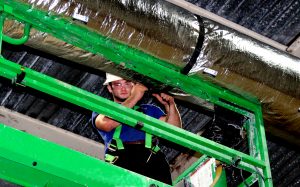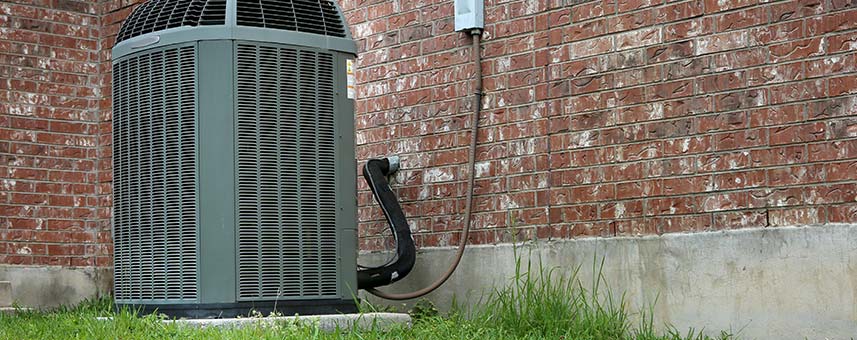Winter Energy Cost Saving
As winter approaches and the outside temperature decreases, inevitably home energy costs will tend to increase. This rise in energy cost doesn’t have to hit the wallet full-force, as there are numerous steps one can take to save on energy costs during the winter months. Some of these energy saving steps can be as simple as maintaining a constant temperature setting on the thermostat all winter or ensuring good efficient seals around windows and doors.
HVAC
 A major component to consider when it comes to efficiency and energy saving is your home’s heating, ventilation and air conditioning (HVAC). The first thing to assess is that your home’s HVAC system is the correct size to efficiently heat and cool the entire interior of your home. It’s highly recommended that your home’s HVAC system be professionally inspected prior to the beginning of summer months and also prior to the beginning of winter months. Additionally, furnace filters should be cleaned or replaced after every 30 days of concurrent use. Your HVAC systems ducts should be inspected for leaks and to insure proper insulation. Keep in mind that closing vents to unused rooms reduces ‘wasted energy’ and ultimately reduces your HVAC system’s workload. It’s also widely recommended that you keep your thermostat set to 68 degrees (or as low as comfortable) because every additional degree of heating can increase energy usage by 6 to 8 percent. Dressing warmly and using extra blankets at night can keep you warm and comfortable without having to increase the temperature on the thermostat dial.
A major component to consider when it comes to efficiency and energy saving is your home’s heating, ventilation and air conditioning (HVAC). The first thing to assess is that your home’s HVAC system is the correct size to efficiently heat and cool the entire interior of your home. It’s highly recommended that your home’s HVAC system be professionally inspected prior to the beginning of summer months and also prior to the beginning of winter months. Additionally, furnace filters should be cleaned or replaced after every 30 days of concurrent use. Your HVAC systems ducts should be inspected for leaks and to insure proper insulation. Keep in mind that closing vents to unused rooms reduces ‘wasted energy’ and ultimately reduces your HVAC system’s workload. It’s also widely recommended that you keep your thermostat set to 68 degrees (or as low as comfortable) because every additional degree of heating can increase energy usage by 6 to 8 percent. Dressing warmly and using extra blankets at night can keep you warm and comfortable without having to increase the temperature on the thermostat dial.
Water Heater
During colder months, it’s estimated water heating accounts for between 9 and 12 percent of a household’s energy bill. Lowering the temperature setting on your water heater to between 110 – 120 degrees is a great place to start cutting water heating costs. It’s estimated that for every 10 degree reduction in temperature to heat water can save between 3 and 5 percent on water heating cost. A simple but effective water heater blanket or shroud is usually within the price range of $20 and can increase the efficiency of your water heater’s ability to retain it’s heat. In conjunction with a water heater blanket, 3 – 4 feet of the cold water line leading into the water heater and 3 – 4 feet of the hot water line leading out of the water heater should be insulated. These simple measures will increase your water heater’s efficiency and lower water heating costs.
Weather stripping / Door Threshold Adjustment
 It is estimated that up to 12 percent of home’s heat loss is due to improper seals around windows and doors. Take a moment to inspect and replace damaged or torn weather stripping around doors and windows and replace as needed. It’s said that, “If you can see daylight under your front door, then you’re losing the indoor air you’ve paid to heat”. Cold air drafts are a primary reason people turn to cranking-up the thermostat to compensate for heat loss. Some door thresholds are equipped with four or five adjustment screws. These screws can be backed-out to adjust the threshold to close the gap underneath a door.
It is estimated that up to 12 percent of home’s heat loss is due to improper seals around windows and doors. Take a moment to inspect and replace damaged or torn weather stripping around doors and windows and replace as needed. It’s said that, “If you can see daylight under your front door, then you’re losing the indoor air you’ve paid to heat”. Cold air drafts are a primary reason people turn to cranking-up the thermostat to compensate for heat loss. Some door thresholds are equipped with four or five adjustment screws. These screws can be backed-out to adjust the threshold to close the gap underneath a door.



